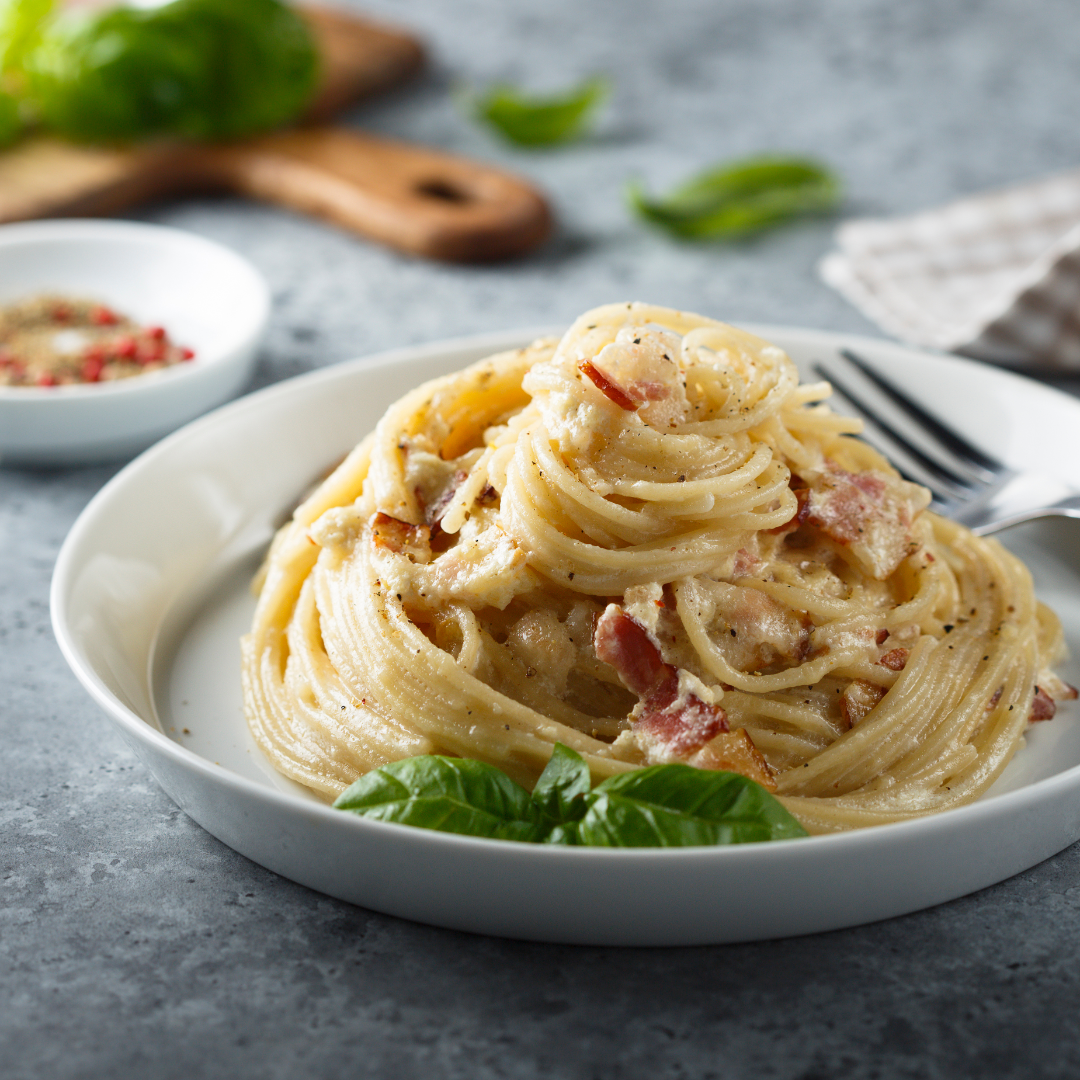For the Carbonara:
- 12 oz (340g) spaghetti (or your preferred pasta)
- 4 oz (115g) guanciale (or pancetta, diced)
- 3 large egg yolks (room temperature)
- 1 large whole egg (room temperature)
- 1 cup (about 100g) Pecorino Romano cheese, finely grated (you can mix with Parmesan for a milder flavor)
- Freshly cracked black pepper, to taste
- Salt, to taste (for pasta water)
1. Cook the Pasta:
- Bring a large pot of salted water to a boil. Add the pasta and cook according to the package instructions until al dente (usually about 8-10 minutes for spaghetti).
- Reserve about 1 cup of pasta water before draining. This starchy water will be used to adjust the consistency of the sauce.
- While the pasta is cooking, heat a large skillet over medium heat. You can skip adding any oil because the guanciale will release its fat as it cooks.
- Add the diced guanciale to the skillet and cook until it becomes crispy and golden, about 5-7 minutes. Stir occasionally to ensure it cooks evenly.
- Once done, remove from the heat and set aside. If there's an excess of fat, you can drain a little, but keep enough to coat the pasta.
- In a large mixing bowl, whisk together the egg yolks, whole egg, grated Pecorino Romano cheese, and a generous amount of freshly cracked black pepper. The heat from the pasta will cook the eggs when combined, so whisking well is key to a smooth and creamy sauce.
- Set this bowl aside, but be ready to quickly add the hot pasta to the egg mixture to make the sauce.
- When the pasta is done cooking, drain it, reserving some of the pasta water.
- Add the drained pasta directly to the skillet with the crispy guanciale (if the skillet is too dry, add a splash of the reserved pasta water to loosen things up).
- Toss the pasta in the guanciale fat to coat it evenly and heat it through.
- Remove the skillet from the heat, and quickly pour the egg and cheese mixture over the pasta. Toss the pasta immediately and vigorously to ensure the eggs and cheese form a creamy sauce. The heat from the pasta will gently cook the eggs, turning the sauce velvety and smooth. If it’s too thick, you can add a bit of the reserved pasta water, a little at a time, until you reach the desired creamy consistency.
- Serve the Carbonara immediately with an extra sprinkle of grated Pecorino Romano and freshly cracked black pepper on top.
- Enjoy your creamy, traditional Carbonara without any cream or seed oils!
Tips:
- Guanciale is traditional for Carbonara and has a distinctive flavor, but if you can't find it, pancetta works as a substitute.
- Pecorino Romano gives the sauce its sharp, tangy flavor, but if you prefer a milder taste, you can use Parmesan (or a blend of both).
- Eggs at room temperature are easier to work with and create a smoother sauce when mixed with the hot pasta.
- No oil needed: The guanciale provides plenty of fat for flavor, so you don't need to add extra oil when cooking the pasta or meat.
This Seed Oil-Free Carbonara is rich, creamy, and incredibly flavorful, and it stays true to the traditional Italian recipe without relying on any processed oils. Enjoy your delicious plate of pasta!

